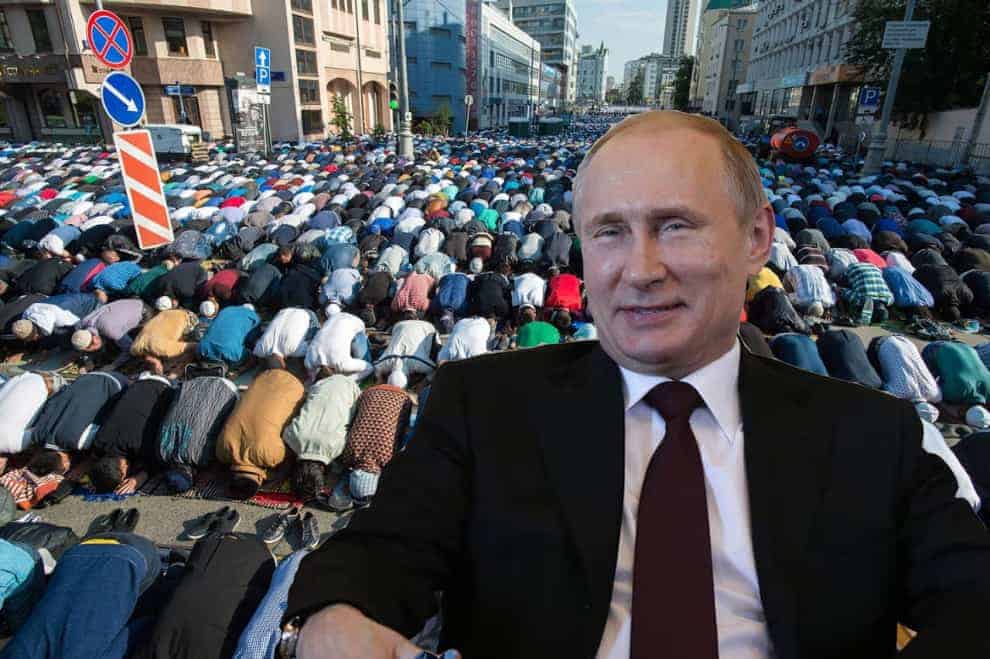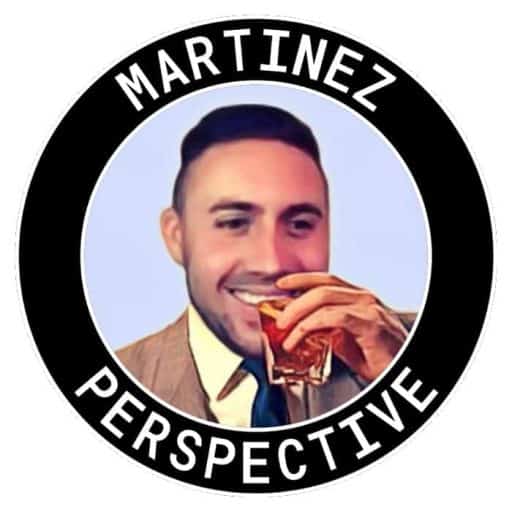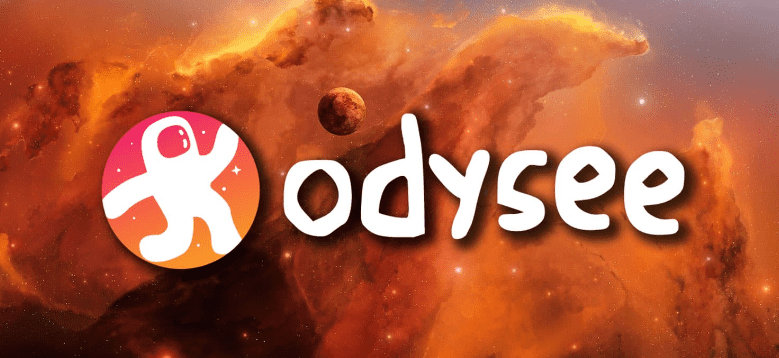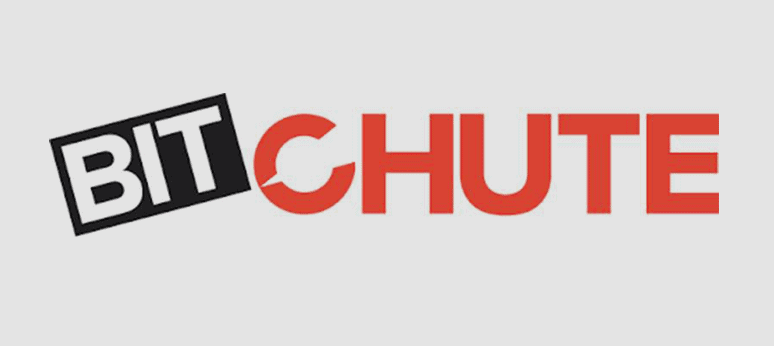Putin has numerous times repeated the globalist mantra that “diversity is our strength” when arguing that Russia is and has always been a “multiethnic and multi-faith” empire.
In a 2013 speech at the Valdai Club, Putin praised multiculturalism and multiethnicism in Russia as something that “lives in our historical consciousness, in our spirit and in our historical makeup. Our state was built in the course of a millennium on this organic model.” He criticized nationalists as working to undermine Russia’s multiculturalism, saying that Russia has always been multicultural and multi-confessional “from its very inception,” and adding:
Nationalists must remember that by calling into question our multi-ethnic character, and exploiting the issue of Russian, Tatar, Caucasian, Siberian or any other nationalism or separatism, means that we are starting to destroy our genetic code. In effect, we will begin to destroy ourselves.
He then outlined his support for a generic Soviet-style civic identity which all Russians, regardless of religion or race, must share:
Christianity, Islam, Buddhism, Judaism and other religions are an integral part of Russia’s identity, its historical heritage and the present-day lives of its citizens. The main task of the state, as enshrined in the Constitution, is to ensure equal rights for members of traditional religions and atheists, and the right to freedom of conscience for all citizens.
However, it is clearly impossible to identify oneself only through one’s ethnicity or religion in such a large nation with a multi-ethnic population. In order to maintain the nation’s unity, people must develop a civic identity on the basis of shared values, a patriotic consciousness, civic responsibility and solidarity, respect for the law, and a sense of responsibility for their homeland’s fate, without losing touch with their ethnic or religious roots.
This civic form of nationalism is precisely what the Soviets practiced and preached in order to blend together all the distinct cultures and ethnicities in their empire under the communist banner of the hammer and sickle. Putin is attempting the same thing with the “Russian Federation,” subsuming into one civic identity all the races of the empire.
In 2010 after ethnic riots against Caucasian migrants, Putin “condemned the rioters’ xenophobic targeting of North Caucasians” and said: “We are all children of the same country… we have a common motherland. Russia has been a multi-confessional and multi-ethnic state.” In 2007, in the midst of a crackdown on Russian ethno-nationalists, Putin made a similar statement: “With the passage of centuries, Russia has been strengthened and developed as a multi-ethnic and multi-faith country. And those that preach the ideas of nationalism, xenophobia and religious intolerance must be set rigid barriers.”
A 2015 article on the “Russian Politics of Multiculturalism” highlighted numerous examples of Putin’s professed support of multiculturalism in Russia, writing:
In his discourses, Putin has worked to cultivate an image of a multi-ethnic and multi-faith Russia. While the ROC certainly maintains a spotlight in the political arena, Putin has made a rhetorical effort to step away from the Church as the be-all-and-end-all of Russian identity, insisting that Russia’s strength lies in its cultural diversity.
The article noted Putin’s support of Islam in Russia, which he called indigenous to the country and gave official recognized status next to Orthodox Christianity. It quotes Putin agreeing with those who say that Russia’s version of Orthodox Christianity is closer to Islam than to Catholicism, revealing that Putin is more inclined to ally with Muslims than Western Christians. Of Russia’s population of 144 million, 20 million are Muslims, making them around 15% of the population and the largest Muslim minority population in Europe. Putin has refused to allow separatist-leaning Muslim areas of Russia to secede and has subsidized them more than other regions, which has led to a massive population boom of Caucasus Muslims who are now flooding into Moscow and St. Petersburg.
In 2015 in Moscow, Putin opened one of the largest mosques in all of Europe. The Kremlin has subsidized Islamic institutions, including religious schools and an Islamic TV channel. Meanwhile, Putin is cozy with Talgat Tajuddin, Russia’s Chief Mufti.
Ignoring statements to the contrary, Putin’s right-wing admirers have promoted the myth that the Russian autocrat is a “nationalist” and the “last hope” of the white race. This view is wishful thinking and a distortion of reality that misrepresents Putin’s actual stated views on race and culture in Russia, which are, judging by the above quotes, clearly multiculturalist. This and other pro-Putin myths have been bolstered by apocryphal nationalistic quotes spread online by Russia’s vast network of bots and trolls.
A “nationalist” would be someone who supports strong borders and an exclusive ethnic identity for the nation at large. Putin’s version of nationalism is not strong on ethnic identity, but rather takes the form of an amorphous civic character that is largely blind to racial and cultural differences. A “Russian,” in Putin’s view, is not an ethnic Slav of European roots but anyone residing inside the artificial walls of the “Russian Federation,” which includes Muslim Caucasians, Central Asians, Jews, even Blacks and other races.
As for borders – Putin seeks not to secure Russia’s borders around ethnic Slavs but to expand them to absorb more non-Slavic ethnic groups from neighbouring regions, allowing them to more easily emigrate to the Russian population centres of Moscow and St. Petersburg. Some rightists are under the impression that Russia has less immigrants than the West and is therefore better, but the reality is that hundreds of thousands of primarily Central Asian migrant workers enter Russia every year, with Putin’s blessing. A Business Insider report titled “Russia Wants Immigrants the World Doesn’t” writes that, “While Europe and the U.S. tighten border controls, former Soviet states are encouraged by Moscow to send their workers.” The article notes that while Kremlin media deceptively blasts Europe for accepting migrants, Putin’s Kremlin itself has flooded Russia with Central Asian economic migrants and has characterized anti-immigrant stances as “an unacceptable form of nationalism.” The article says that migrants account for 15% of the current Russian workforce. It gives us these numbers:
Russia had 161,000 foreigners come into the country in 2015 and stay. In 2016, that number increased to 196,000, according to the Russian Foreign Trade Academy and Gaidar Institute. Work-permit sales in Moscow rose by 10 percent last year, too. With most immigrants coming from former Soviet states like Tajikistan and Kyrgyzstan, the migration has proven beneficial to all involved: Those two countries top the list of global economies relying on remittances, according to the World Bank. … the government in February announced 200,000 previously deported Tajiks would be allowed back into Russia.
Putin has sought to lessen border controls with former Soviet republics as part of his Eurasian integration scheme, hoping to build up the Eurasian Union as an economic and geopolitical bulwark against the West. That means, many more migrants will more easily flow into central Russia thanks to Putin. In 2013 he said, “The [existence of] visa requirements within the CIS would mean that we are pushing former Soviet republics away from us. We do not need to push them away. Rather, we need to forge closer relations with them. But we ought to make this process more civilized.” The Eurasian Union is an economic pact established in 2015 by Russia, Kazakhstan and Belarus, which now includes Armenia and Kyrgyzstan.
Throughout his reign, Putin has moved to silence far-right Russians under anti-extremism laws, actively calling on security services to combat and prosecute hate speech and xenophobia. He only began to ease up on them in 2014 in order to channel their patriotism and anger towards fighting the Ukraine. In 2012 Putin explicitly banned “Nazi ideology and symbols” and in 2014 he outlawed Holocaust revisionism and criticism of the Soviet Red Army. The only ethnic group Putin seems to allow attacks on now are the white Ukrainians who he wants to colonize under the quasi-bolshevik banner of Novorossiya. All out slander and calls for genocide of Ukrainians are allowed under Putin, but nationalist criticism of Central Asian migrants or Jewish Bolsheviks of the Soviet-era is suppressed as “hate speech” by the Kremlin.
Playing out his chaos strategy to disorient and ultimately destroy the West, Putin simultaneously panders to the far-right and far-left with sound-bites and rhetoric. The rightists only pick out the bits that they like while ignoring the statements that contradict the nationalist “pro-white” depiction, like this Putin rant on RT promoting anti-American white guilt for the mistreatment of the Indians:
“[…] we should not forget that America’s development began with a large-scale ethnic cleansing, unprecedented in human history. […] When Europeans arrived in America, that was the first thing they did. And you have to be honest about it. There are not so many stories like that in human history. […] Then there was slavery, and that’s something that is deeply ingrained in America. In his memoirs, US Secretary of State Colin Powell revealed how hard it was for him as a black man to grow his way up, how hard it was to live with other people staring at you. It means this mentality has taken root in the hearts and minds of the people, and is likely to be still there.”
If a leftist said those words, the pro-Putin rightists would scoff and ridicule them as practitioners of white shaming and guilt, but when Putin says it, somehow it gets written off, downplayed or simply ignored. In another video, Putin explains how Whites are becoming a minority in the United States. He then goes on to say, “I am not saying this is good or bad, just that global changes are going on”, showing his indifference on the issue. The quotes I’ve brought out here should suffice to close the case on the “white saviour” myth of Putin. But as with any cult, the true believers will go on hoping and praying that their designated saviour will come to the rescue of us helpless plebs despite all the signs to the contrary.











Good article. I wonder if that faggot “Vincent Law” (if that’s even his real name) could digest it.
He’s a Russian bot.
There were multicultural states that organically existed inside Central and Eastern Europe. One such state was the Habsburg Austria-Hungary. The Habsburg monarchy was multiethnic, multicultural and existed for several centuries. There are no white saviors on this world, it is impossible or hard to be one. If a politician attempts to be one, he will be sabotaged by bureaucracy or businessmen or blocked by factions in the ruling elite. Another fact is that there is a economic and demographic spiral going on. All european have very low birthrates. That means the population ages and there is a labor shortage. But the economy requires new laborers as taxpayers. Somebody is supposed to do vacant jobs, jobs that white peoples don’t want to do. And then there is the insatiable desire of any capitalist to lower wages. So the idea of bringing in migrants becomes naturally seductive. Solving such a complex problem is hard for any politician. It might require curtailing freedoms of women. Heck even Poland has now the lowest birthrates in history (1.3 per couple). But the Polish government proved unable to pass laws limiting abortion and increasing the birthrate. Because even there local women turned out to be too feminist and blocked it. The Polish government might try to resist migrant quotas, but the powerful EU Commission would blackmail it into accepting migrants sooner or later. No political leader is all powerful. Most politicians swim with the tide of historical direction, and contemporary capitalism of transnational corporations, international banks and oligarchies definitely forges a direction into globalization.
The example you cited of a multicultural state – Hapsburg Austria-Hungary – was artificially existent and not “organic” by any reading of actual history. It was a precarious Dual Monarchy of Austria and Hungary, which came close to collapse several times, most notably in 1848. When the Dual Monarchy showed just how weak it truly was in World War I, it quickly imploded once all the different ethnicities seized their own territories and declared independence (or were forced into other nations artificially, such as Yugoslavia).
The low birthrates is unfortunate and angering, but at the same time the social conditions that led to it were itself instituted by the same elites now promoting mass-immigration as the alleged “solution”. I hope this changes soon, with the increasing consciousness shift and return to identity that is arising among our peoples.
“Jobs that white people don’t want to do”….Personally, I’ve only primarily done manual labor jobs, out in nature and dirty restaurant kitchen jobs, working alongside many immigrants. I saw other white people who were willing to do these sort of jobs.
How were our European countries able to come to prominence in the first place, except by the hard work and labor of our ancestors?! Even barring the main countries that had empires, continental European nations arose from the hard work and labor of the indigenous people, achieving a rate of prosperity and civilization hardly rivalled at all in human history.
And who among these current migrants coming to Europe are “doing jobs white people don’t want to do”? Statistics and facts on the ground attest to the majority being unemployed (by choice), entitled lazy bums just wanting to take the benefits and privileges offered by the same “system” they hate.
I personally saw large groups of migrants (nearly all working-age men) in Rome, Athens and southern Germany who were just standing around or sitting around all day, “hanging out” and not concerning themselves at all with working like the indigenous white people who are allegedly “lazy”.
All of these facts belie the apologetic claims that such migrations are “needed” to allegedly fill the labor shortage, which is nothing but another big lie excuse to cover-up a kosher, anti-European, social engineering agenda.
The Habsburg Austrian Empire was quite a natural Catholic state, which in fact successfully blocked Ottoman expansion into christian Europe. The Austrians annexed Hungary, Croatia and Transylvania by liberating them from muslim Ottoman rule. Older small Hungarian, Croatian, Serbian states were all obliterated following the Ottoman victory at Battle of Mohacs in 1526 by Sultan Suleiman the Magnificent. Much of the local Balkan or Hungarian aristocrats were wiped out or converted to Islam. When the Austrians first entered Hungary or Croatia, they saw a desolate landscape. The nation-state model is a product of the 19th century. It does not apply to everyone. There were too large multiethnic political unions or constructs, which were quite long-lasting. There is a country called Belgium, which is also a multiethnic political union of Flemish and Walloon. Switzerland is a multiethnic union of cantons.
Roman is a fucking tool. Here’s one for you Roman, and this isn’t “new” by any means: IF whites bring in non-whites of working age to replace whites’ declining demographics, WHAT does this do to the places the minoritaaays left? Shouldn’t you be championing a return of minoritaaays to their homelands to make up for their poor economies and poor GDPs per capita? Roman is racist against minoritaaays.
Right on Dana. Roman offers us a false dilemma: repress women or import slaves. We will learn to love the totalitarian Eurasian Fourth Way or die, is that the message the poppinjay is here to push?
“There is a country called Belgium, which is also a multiethnic political union of Flemish and Walloon”…LOL you’re trying to teach me about Belgium?! My mother is Flemish on both sides! (Which makes me half-Flemish). And although I’m closer to my paternal South German and Spanish side, I am very familiar with the Vlaam people obviously!
Now, let me educate YOU about using Belgium as an alleged example: Flanders and Walloonia were only brought together with an initially German (but now mixed with various European ancestries) royal family in 1831. Yet even that has been precarious, and secessionist and/or autonomist movements are very strong, particularly in Flanders. When two different cultural and linguistic groups are forced to be together by bringing in a foreign monarch, yet even then autonomist or secessionist tendencies remain strong, by definition its an ARTIFICIAL balance and not organic.
The rest of your comments vis-à-vis the Austrian Empire, their conflicts with the Ottomans, annexation of liberated territories, etc. I fail to see what any of that has to do with your original claims….”Switzerland is a multiethnic union of cantons”…yes, which has only survived due to being very decentralized. How can any of this apply to Putin’s Russia?
It is just an example that multiethnic, multicultural states can be organic if they are long-lasting. Belgium was made lasting by forces of history and economics. The walloons needed flemish ports, the flemish ports needed walloon industries and mines. Russia is a federal state by law, not a unitary one. Russia under the Romanovs grew by capturing territory from the muslim Ottomans (Crimea, Jedistan, Nogay Horde, Podolia, parts of the Caucasus) or by capturing territory from the declining Mongol Khanate. Russia bordered the Muslim and East Asian civilizational realms. It had to either conquer lands from the Ottomans and Mongols back or be conquered by them (both Mongols and Ottomans tried to do that). When you border Muslims and East Asians, you would inevitably be somewhat multicultural. Besides, the economic development of Britain, France, Netherlands, Spain, Portugal depended on their colonial empires. There was plenty of multiculturalism in the colonies (that is how beaners appeared). Now most Europeans are engaging in the multicultural construct called the EU. Poland needs the EU financially. Small nation-states are not economically viable or practical in the current economic predicament.
Lol Sean. I guess Roman is here for entertainment value, or he’s just stupid and/or he’s some kind of troll who either has some issue with folks here, or maybe he’s even government paid, lol. Dude loves to blab though, no doubt about it. Loud, blabbing mouths who don’t know WTF they’re talking about are a major problem in society today.
“Appeal to ridicule,” “appeal to authority,” and “ad hominem” name calling are not valid arguments but logical fallacies. If you disagree with Roman, it’s always better to give your own clear reasons as logically as you can express it, like Sean did, instead of using fallacies. http://utminers.utep.edu/omwilliamson/ENGL1311/fallacies.htm Otherwise, as soon as you start using fallacies and your opponent does not, you lose the intellectual argument, even if you win the “emotional” support of a large number of people mostly ignorant of logical fallacies. That way we all end up agenda-pushing-at-the cost-of-truth instead of the truth-exposing-at-the-cost-of all emotional and ego-investments, i.e., agendas.
Negentropic, ummmm, yes dude, I’m well aware of what appeal to ridicule and appeal to authority fallacies are, as well as what ad hominems are. Can we get a No Shit Sherlock moment over here? Lol.
Now a tidbit for you is just because you call somebody names doesn’t automatically make your argument/s less valid or invalid. Calling someone a moron when they’re a moron or other such names when they are is not a fallacy. One thing that can be said about being a moron though is that just because somebody is dumb in a certain area or areas doesn’t necessarily mean they can’t be smart in another area or others.
Calling people names is not something I generally do and it’s not like I do it to make myself feel better or anything of the sort, but when I call people names, I’m usually doing it because I don’t particularly have a lot of patience and tolerance for idiocy. I’ve explained things to Roman before, but they don’t sink in. I can tell that he also has a tendency to say shit that he hasn’t researched, or just things that a flat out untrue. I get tired of explaining myself over and over again, and in these instances I’m likely to throw out names. Sometimes people also don’t take you seriously if you’re talking nicely to them, unfortunately.
If I remember correctly, you’re the same person from a while back who was being condescending to me for what I was saying about black crime. Like a dummy, you threw an assumption at me acting like I was of the impression that blacks are the “root of all my problems”. You know what they say about assumptions. People who do a lot of assuming tend to be gotdamned morons. They’re the types of people who love to speak passionately about shit they know little or nothing about. They drive me up the wall. It’s like, if you’re the type of person who likes to make a lot of assumptions, don’t take it to the political arena because the shit you’ll be saying will play a role in negatively impacting other people. So, you’re doing it at other people’s expense and it’s rather despicable if you ask me. They need to go other places where their knucklehead assumptions don’t negatively affect other people.
Talgat Tajuddin was elected to one of the leading positions in the Eurasia movement (along with Jewish Hassidic rabbi Avram Shmulevich and several Russian Orthodox leaders), and one of his junior imams, Farid Salman, attended Dugin’s Eurasianist Constituent Congress in 2001:
http://web.archive.org/web/20021002070111/http://utenti.lycos.it/ArchivEurasia/levkin_congress.html
http://web.archive.org/web/20020617114126/http://utenti.lycos.it/archiveurasia/eurasia_210401.html
http://www2.stetson.edu/~psteeves/relnews/0104f.html
Geydar Dzhemal led the Islamist “Islamic Renaissance Party”. A close friend of Dugin, Dzhemal called his party a synthesis of Islamism with Marxism, and conceives of an alliance between Shi’ism and Russian Orthodoxy. Like his friend Dugin, he was obsessed about messianism and eschatology.
Abdullah (Risto) Tammi, a Finnish Muslim convert who leads the Finnish Islamic Party, was a self-professed KGB spy who even today promotes a pro-Russian line. He has participated in rallies alongside the “Finnish Anti-Fascist Committee” (SAFKA), a pro-Kremlin group linked to Russian-Jewish oligarch and propagandist Boris Spiegel. SAFKA members actively promote Communist-era symbols in Finland and the Baltic countries, and malign nationalists there as “Nazis”. Thus we see yet another chain in the Duginist-Islamist nexus.
Very interesting info. Esoteric Islamo-Communism on one side, supposedly fighting the Trotskyite (Communist) Neoconservatives and Democratic Stalinists on the other. Some clowns still say Communism is dead.